The first thing to notice about the Intersolar Europe 2022 show in Munich is that the solar panels are a big part of the show – literally and figuratively.
Solar panels completely fill the show’s first two halls – and spill over into a third. Some solar panels are big – nearly eight feet tall. The Canadian Solar module below, at 2,384 millimeters in height, is the standard size large module on the floor – that’s about 7’9” for those in the United States.
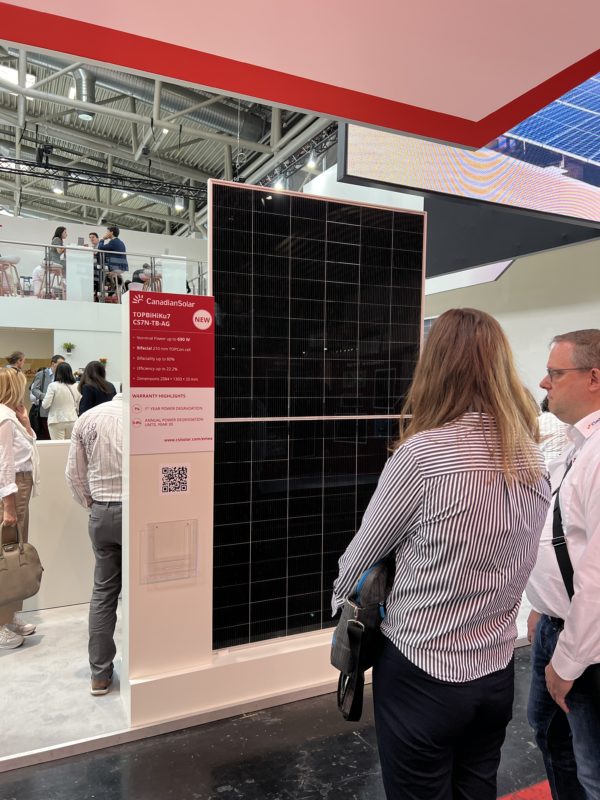
All of the major solar panel manufacturers had a similarly sized, highest wattage and usually highest efficiency module in this same form factor.
The manufacturers often showed off a broad array of module sizes. One group showed a lineup of six uniquely sized modules – everything from their smallest 12- and 24-volt off-grid panels, to residential units and commercial modules, and then two utility scale products.
Without a doubt, there is much less of a standard size to solar modules than there used to be.
The featured image in this article shows Meyer Burger’s new residential solar tiles being installed at their booth. As we can see in the image, these units are meant to be climbed on by the installation crew during the installation, as opposed to standard modules, which must be handled cautiously.
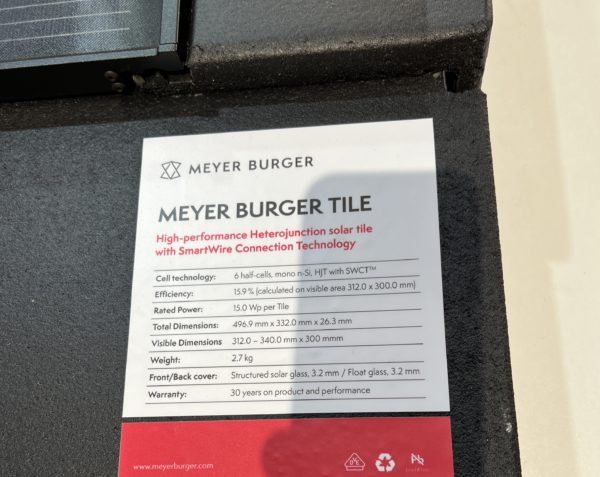
The 15.9% efficiency units snap into place, and were casually tossed from one installation team member to the other. The installation seems much more Lego-like than a typical solar installation. It was very exciting to watch, and there was a pretty good crowd surrounding the Meyer Burger booth all day.
Agrivoltaic-specific solar modules were on display as well.
These units were most often glass-glass bifacial panels with extra spacing between the solar cells to allow for specific amounts of light to pass through the modules and foster the plant life below.
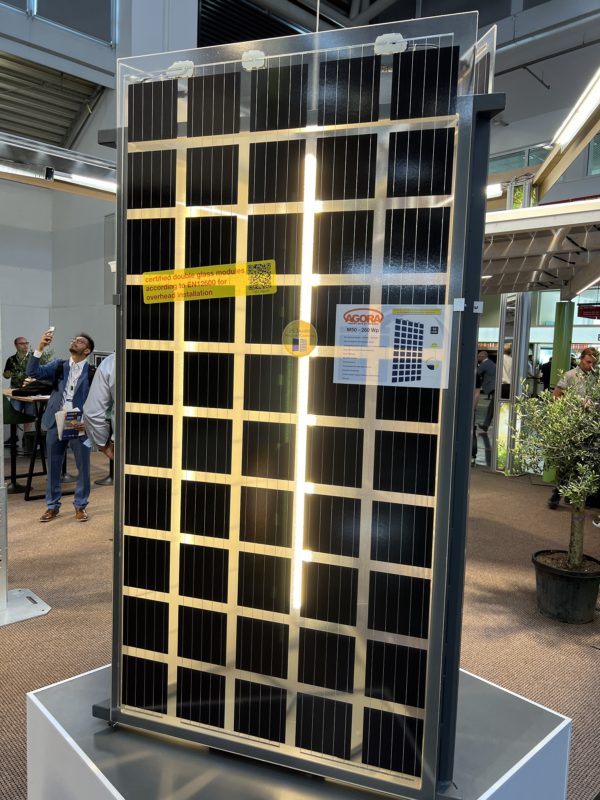
The Agora M-50 260-watt module was designed to allow 40% of all light to pass between its 50 solar cells.
Agora was one of the only companies to share a solar module specifically designed for agrivoltaics, but many other solar panel and racking manufacturers referenced agrivoltaics in their imagery and marketing.
With a cornucopia of panels available, some of the countless, subtle innovations were sure to have been overlooked by the majority of buyers.
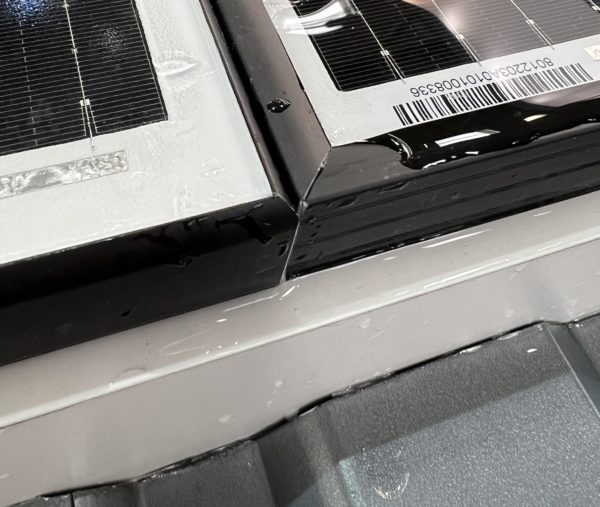
The solar panel above, by Dah Solar, adjusts the design of the aluminum frame around the solar panel. This brings the glass edge equal in height to the frame edge, limiting the pooling of water and therefore reducing mineral deposits in the corners of the module.
This was one of at least two micro-innovations that specifically focused on the corners of solar modules at the show.
There was also a nice presentation of panel flexibility by Suman Solar Panels.
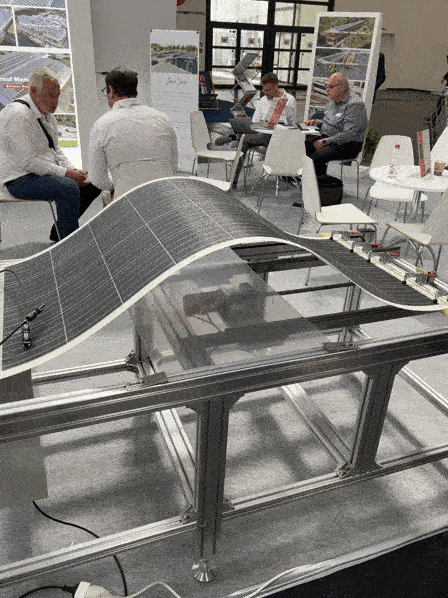
The bending of this solar panel continued for three days straight. The representative said that the module has both solar cell and cell interconnection innovations that allow them to withstand persistent bending and twisting.
Walking among the attendees and listening intently whenever English was spoken, there was a lot of talk about expanding solar panel manufacturing in Europe, and about Meyer Burger being sold out. Conversations also focused on residential contractors, who have recently become so busy that they aren’t focused on sales right now, but are instead preoccupied with getting proposals out quickly, taking in orders, and managing the associated installation processes.
Multiple parties suggested that electricity pricing, along with the war in Ukraine, have been driving up solar demand across all of Europe. Germany’s solar market is particularly heated right now.
German demand for energy storage coupled with residential solar is so significant that one group, which has been installing ~700 projects a year, has considered offering only solar-plus-storage. However, one hitch in their plan is that the advanced inverters that manage batteries are challenging to procure due to global chip shortages.
This content is protected by copyright and may not be reused. If you want to cooperate with us and would like to reuse some of our content, please contact: editors@pv-magazine.com.
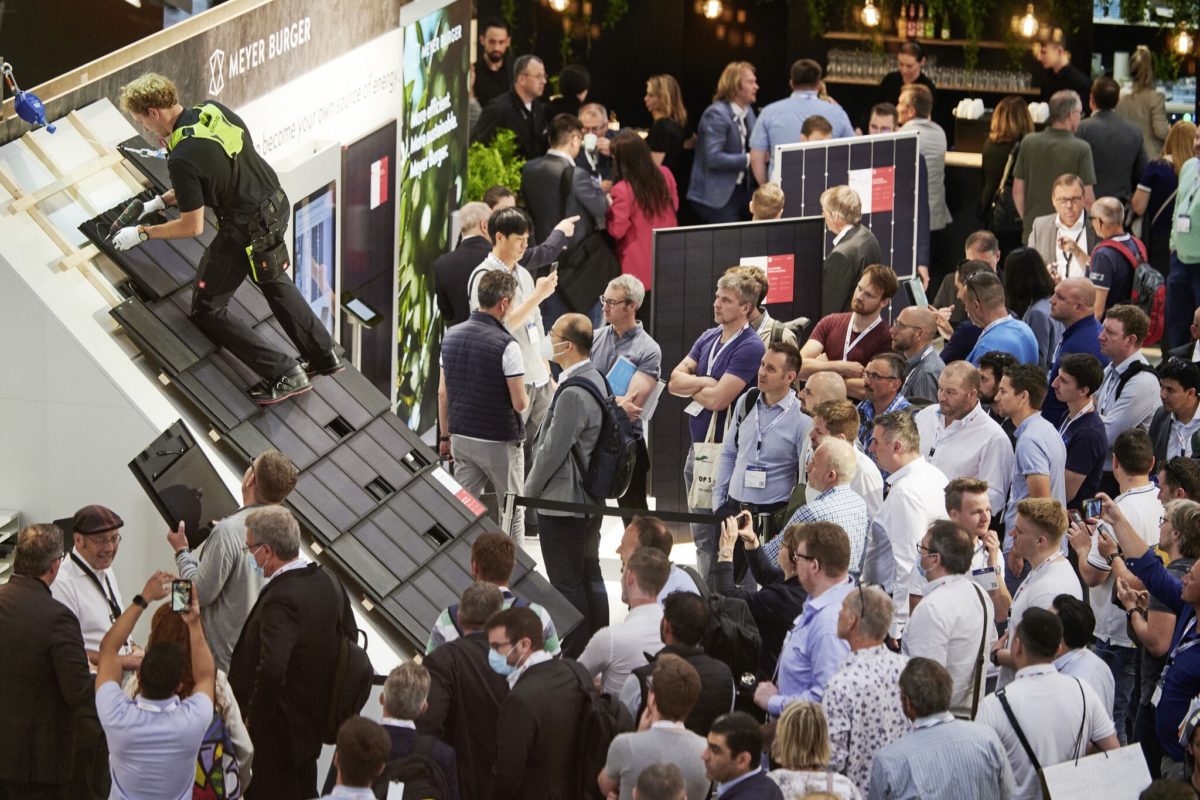







Great to see such interest and demand! Looking forward to the day Europe doesn’t want or need any fossil-fuel from Russia or anybody else.